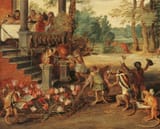Search Results
7/13/2025, 11:02:11 PM
From 1865 onward, the CBOT made three important changes to the structure of its trading market. First, it established defined areas specifically for futures contracts on agricultural commodities. Second, contracts were standardized in terms of quality, quantity, and time and place of delivery. This change was later accompanied by the introduction of a clearinghouse, which reduced the counterparty risk that had plagued—as some financial economists argue—OTC trading. The third change was the introduction of a margining system.
Until the beginning of the 20th century, regulation was left to state legislation, self-regulation, and decisions by state and federal courts. It was only in 1916, after several attempts to regulate futures exchanges at the federal level (at least partially), that the first federal act, the Cotton Futures Act, entered into force. The continual changes to its own regulations made by the CBOT were reactions to court cases, to make trading acceptable in the eyes of state and federal legislators, and to ensure the performance of the contracts traded under its premises.
Until the beginning of the 20th century, regulation was left to state legislation, self-regulation, and decisions by state and federal courts. It was only in 1916, after several attempts to regulate futures exchanges at the federal level (at least partially), that the first federal act, the Cotton Futures Act, entered into force. The continual changes to its own regulations made by the CBOT were reactions to court cases, to make trading acceptable in the eyes of state and federal legislators, and to ensure the performance of the contracts traded under its premises.
Page 1
